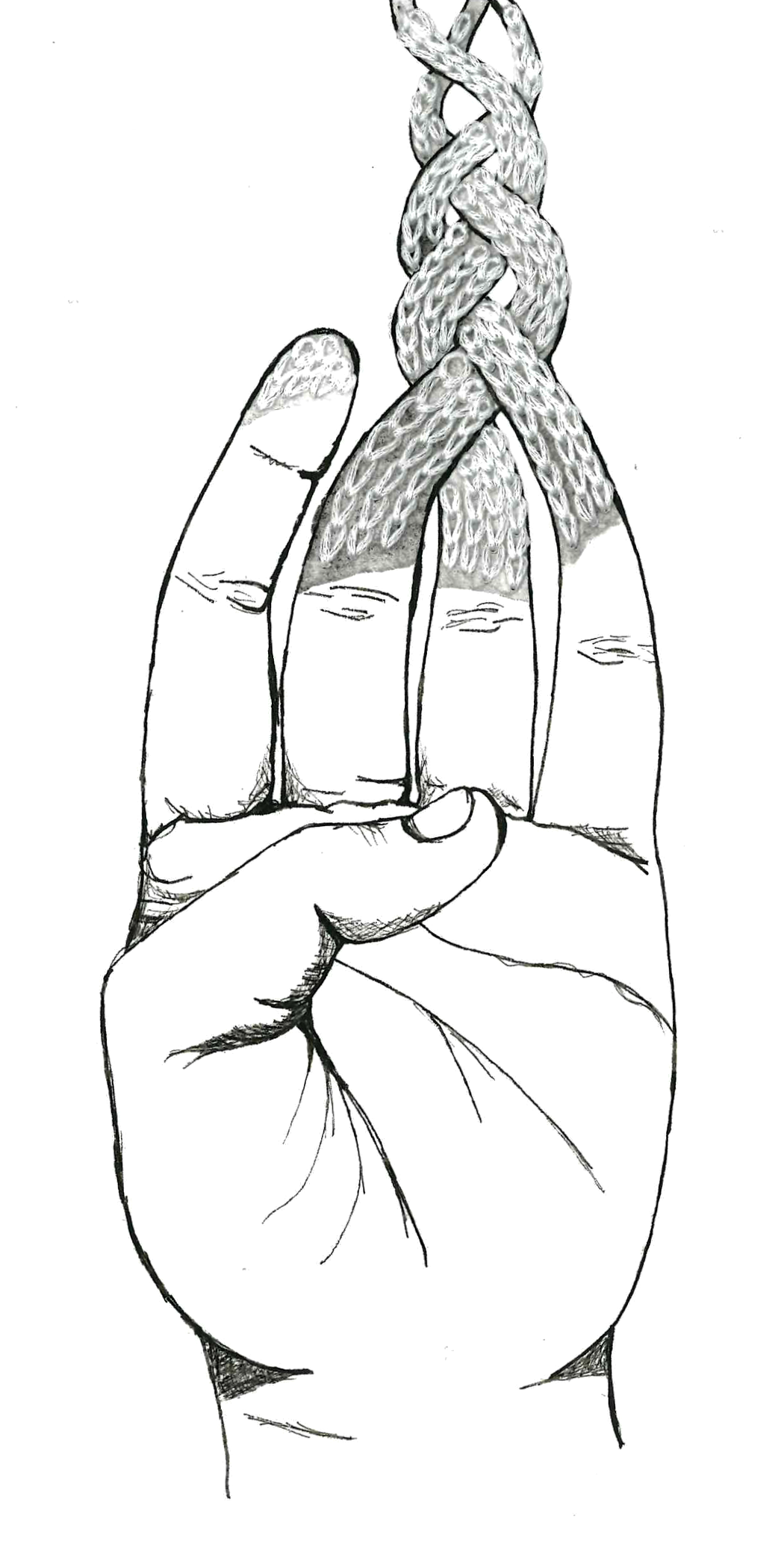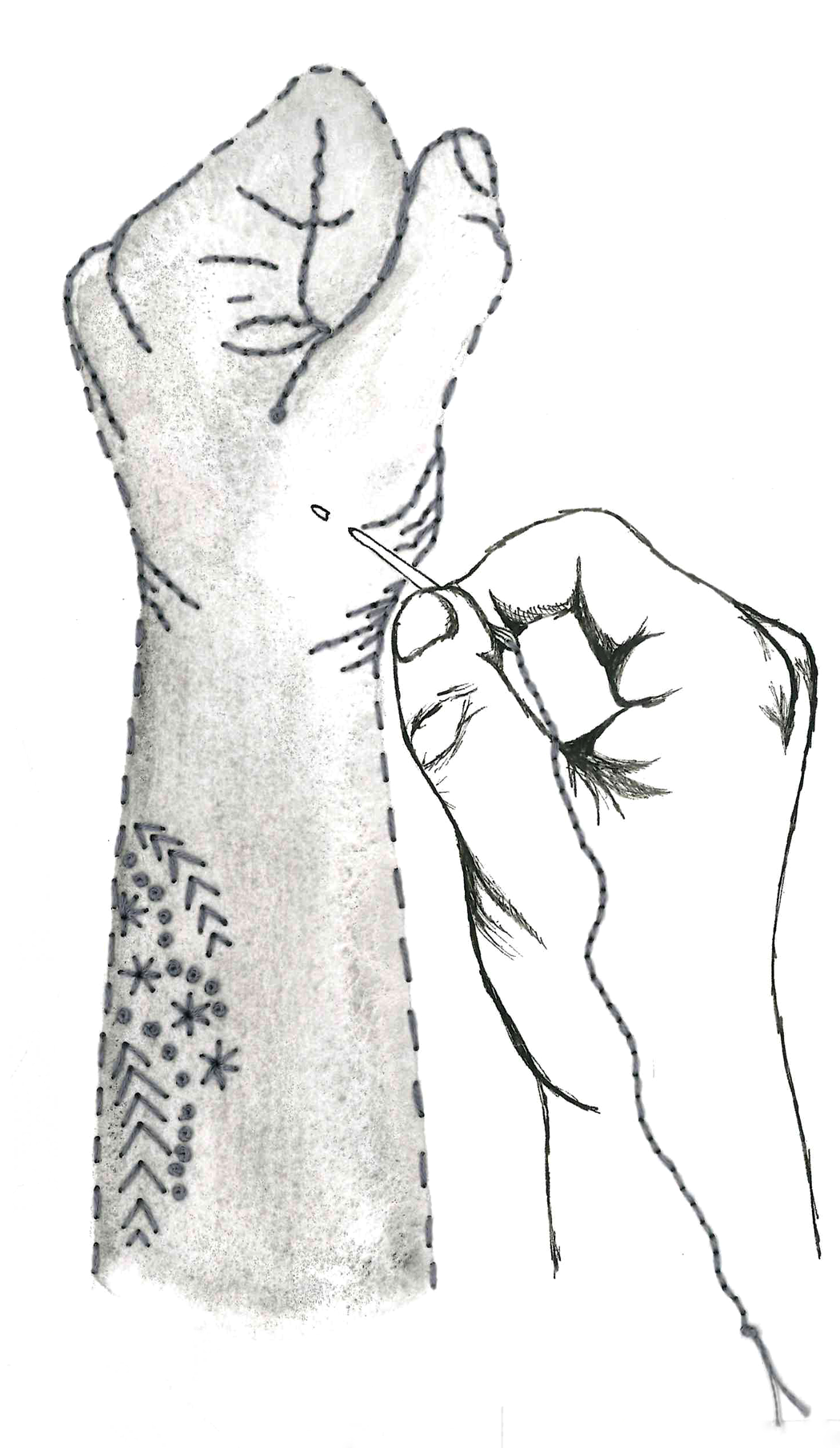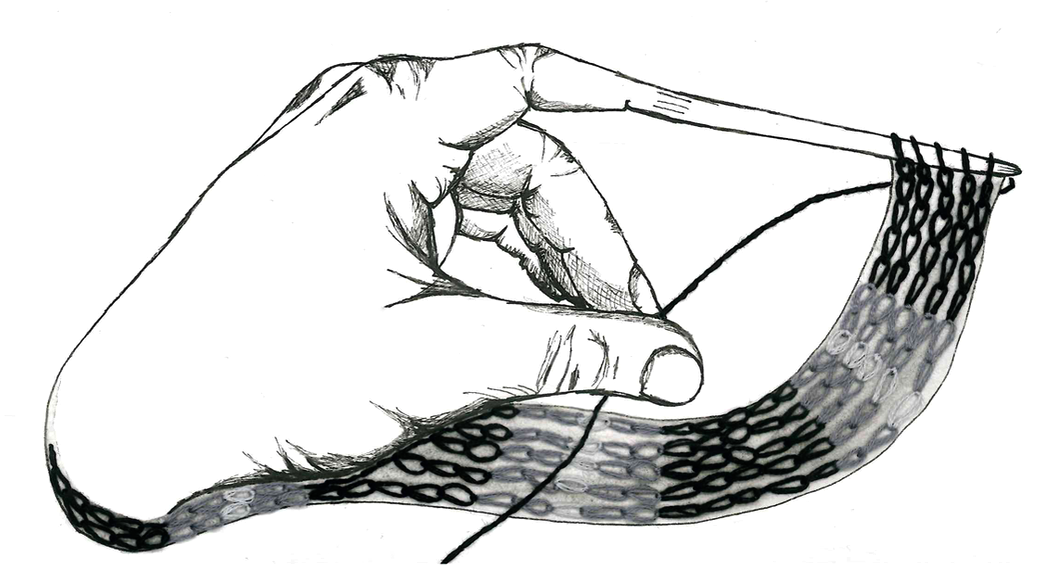Essential Needlework Advice for Shadows, Spectres, and other Ethereal Beings
To make yourself a body from scratch, first you need to find a needle. Sharp or dull, with a head or an eye or without. Of a suitable length. Hooked? Possibly. You won't need a thimble until you have fingers, and, if this is your first attempt, you may not make it to the tips before unraveling. Don't get ahead of yourself.
It is best to start from your insides and work outward, for example, by weaving a sturdy armature that can be wrinkled or stepped on for years without becoming inflexible or threadbare. A rug, hooked or braided, might work. Remnants of fabric and yarn will also do, or a wool sweater felted, accidentally or on purpose, in the dryer. Lung of cardigan, heart of mitten, nerves of lace! No one will be able to see inside you, if all goes well, so it is unnecessary to use complimentary colors or prints. Your mismatching collection of shank buttons and toggles that were once sewn into clothing tags (meant to replace any ones lost from the primary set on a garment), can represent valves or alveoli.
Then, knit yourself a covering; cables, knots, fringe. Choose a thick yarn for this part, worsted weight or larger, to avoid thinness of skin, and knit using small needles to create a tight stitch that will allow nothing to come through. Leave an opening for a zipper along one side, concealed under an arm. Left or right, your preference.
Now come the most daunting decisions. Do you want your corporeal self to have eyes, ears, nails, a mouth? To be merely a vague, nebulous presence, or to have the sharp lines and details of an individual?
Remember, once you've made yourself a body, it may have a mind of its own. Its linty consciousness could discover how to make and use tools, and then redesign its skin in clashing stripes of color or tattoos of cross stitch. It might learn to quilt, expanding itself in every direction with layers of batting and appliqué. It might decide to wash on hot and then refuse to reshape and lie flat to dry, pinning itself to a clothesline in bright sunlight to whip and snap in the wind.




Rachel Linn holds an MFA in creative writing from the University of Washington, where she received the Eugene Van Buren Prize for her thesis project. Her writing and illustrations have appeared or are forthcoming in Storm Cellar, small po[r]tions, Pacifica, The Future Fire, and elsewhere. She currently maintains a website called Graphoscope, where she posts annotated versions of literary texts, and teaches bicycle riding and repair classes at alternative high schools for the Reno Bike Project.

